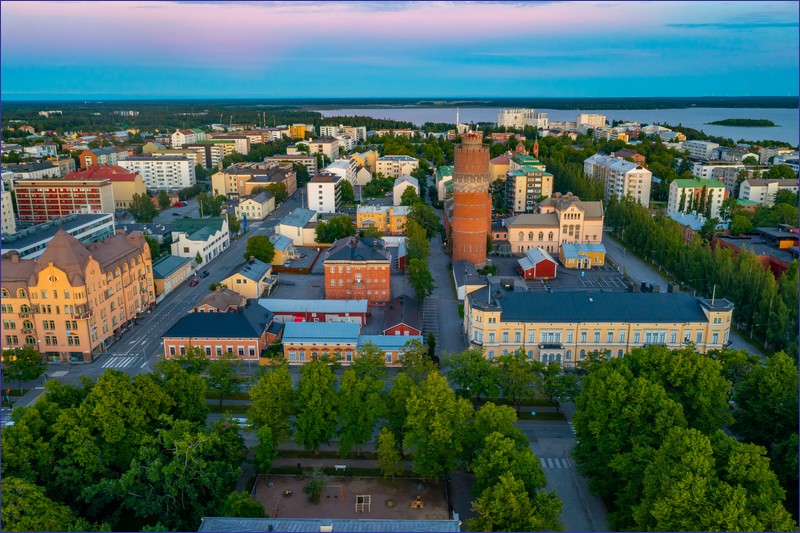Vaasa is a city with over 70,000 inhabitants. It was founded in 1606, but nearly all of its buildings were destroyed in the great fire of 1852. The rebuilt city was relocated 7 kilometers from its original location. From 1862, the city was called Nikolaistad in honor of Tsar Nicholas I of Russia. The main streets in the new town consists of five broad avenues that divided the city into sections, with each block further divided by alleys. The town was renamed Vasa (Vaasa) after Tsar Nicholas II was overthrown in 1917.
Architecturally, Vaasa is rather unremarkable. On the outskirts of the city, the ruins of St. Mary’s Church from the 16th century remain as a relic of the times before the great fire. Just a few dozen meters away stands a beautiful building that, as one of the few, survived the fire of 1852. Originally serving as a court of appeal, the building was rebuilt after the fire and later consecrated as a church. Next to it stands a bell tower, and a charming park alley leads to the temple.
In the city center, several small museums are worth a visit. The Car and Motorcycle Museum (Vaasan auto- ja moottorimuseo) is known for its collection of vintage cars displayed across three floors. The Ostrobothnian Museum (Pohjanmaan museo) presents the history of the city. Visitors can also explore two art museums (the Kuntsi Museum of Modern Art and the Tikanoja Art Museum), as well as a small Maritime Museum.
The only noteworthy historical monument is the Holy Trinity Church (Vaasan kirkko), with its beautiful, minimalist interior.
The small wooden railway station is located close to the city center. The station has a ticket machine, a restroom, and a waiting area.
Ferries operate between Vaasa and the Swedish city of Umea.
Related articles:
Train travel in Finland – a comprehensive guide
